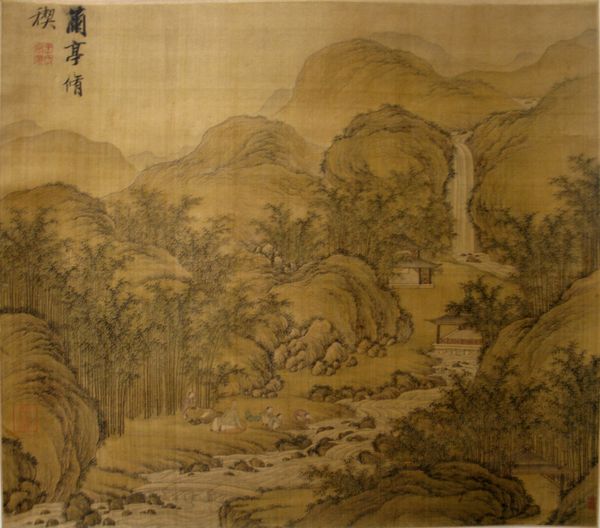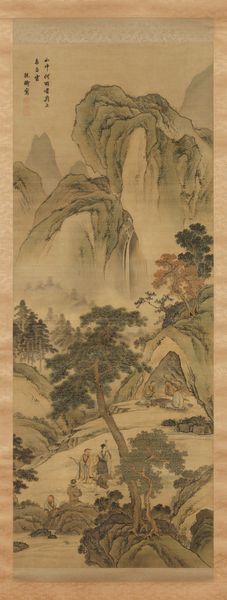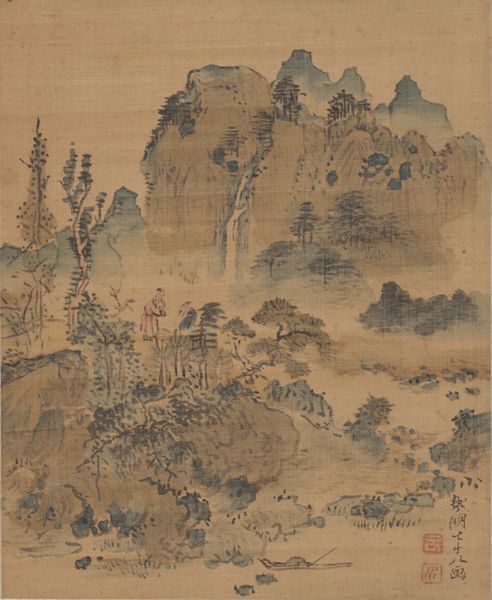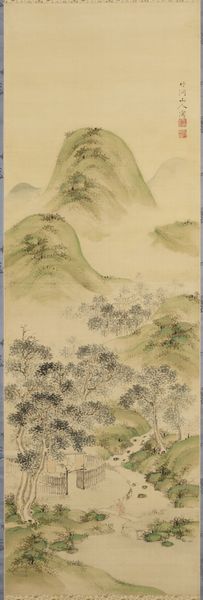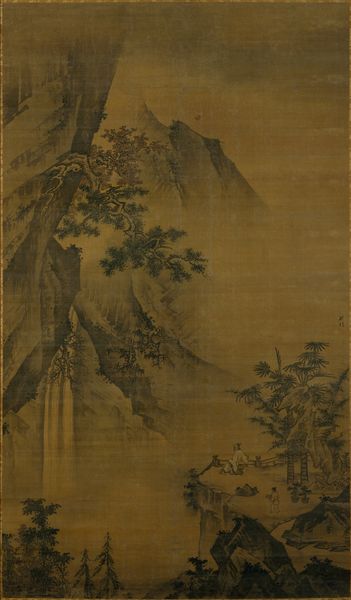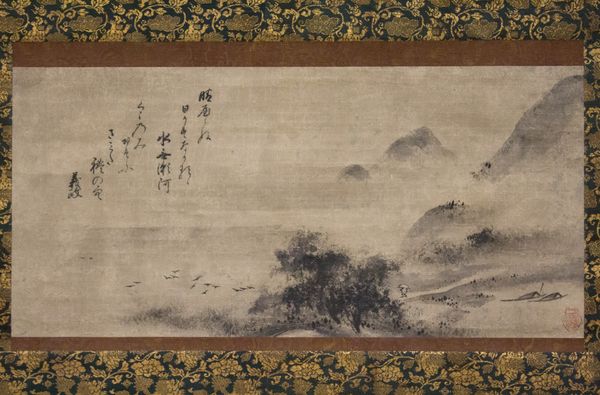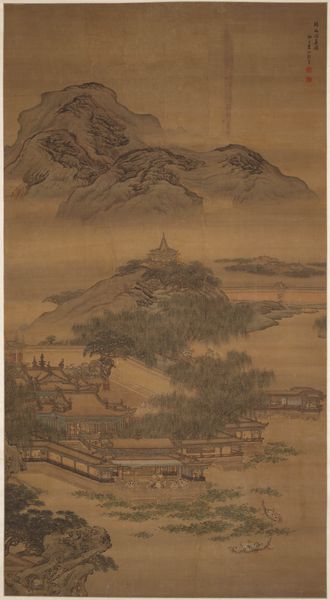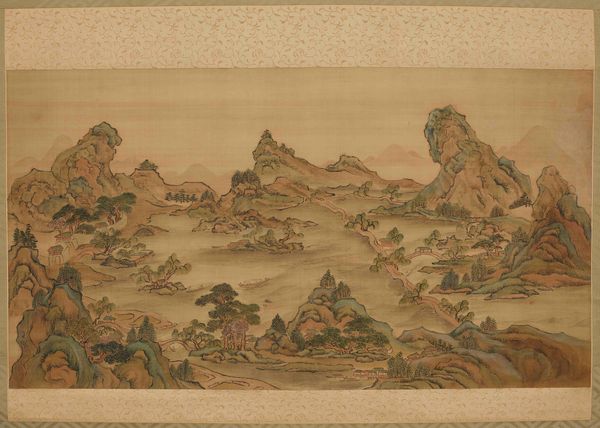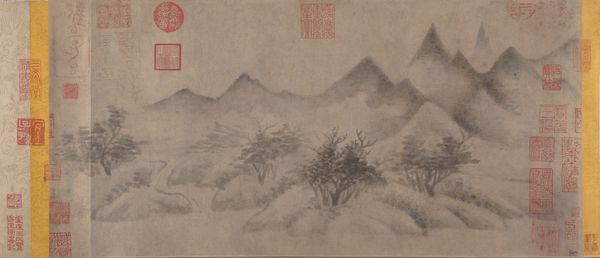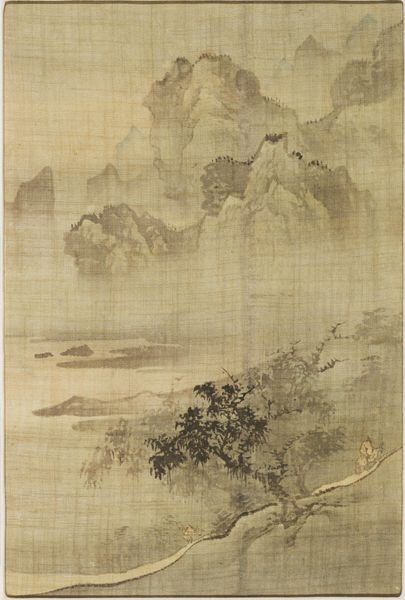
painting, watercolor, ink
#
painting
#
asian-art
#
landscape
#
watercolor
#
ink
#
classicism
#
orientalism
Dimensions: 12 1/2 in. × 16 ft. 1 in. (31.8 × 490.2 cm)
Copyright: Public Domain
Editor: We're looking at "Wangchuan Villa," a landscape painting from the 16th or 17th century, attributed to an anonymous artist. It’s rendered in ink and watercolor. There's a muted quality to the tones that create a sense of tranquility, and the composition unfolds in layers, guiding the eye through the landscape. What structural elements stand out to you in this work? Curator: The most salient aspect is the linear progression inherent in its composition. Observe how the painter has meticulously constructed a spatial hierarchy. Foreground elements, though delicate, ground the piece. Notice the repetition of the arboreal motifs that draw your eye deeper into the imagined space. Editor: I see what you mean about the trees leading the eye. And the mountains in the back—they almost seem to frame the central part of the composition. Is there something significant in how the mountains were painted? Curator: Precisely. The artist employs a sophisticated technique of ink wash, building form and texture through subtle tonal gradations. This approach emphasizes volume while retaining an ethereal lightness. Note, too, how the mountain contours are not rigidly defined, allowing them to merge with the sky, suggesting infinite space. Editor: It's like the structure isn't just visual, but also contributes to a feeling of depth and boundlessness. Curator: Precisely. Consider the overall symmetry as well, the delicate balance between the distinct pictorial sections. In many ways, this composition serves as a model for organizational harmony through calculated, but subtle, construction. Editor: I never thought of symmetry in a landscape before! It adds another layer to its complexity. Thank you for pointing those out. Curator: It is in closely examining such formal relationships that one begins to decode the richness of the painterly intention and understand the underlying architectural qualities in what initially seems natural.
Comments
No comments
Be the first to comment and join the conversation on the ultimate creative platform.

